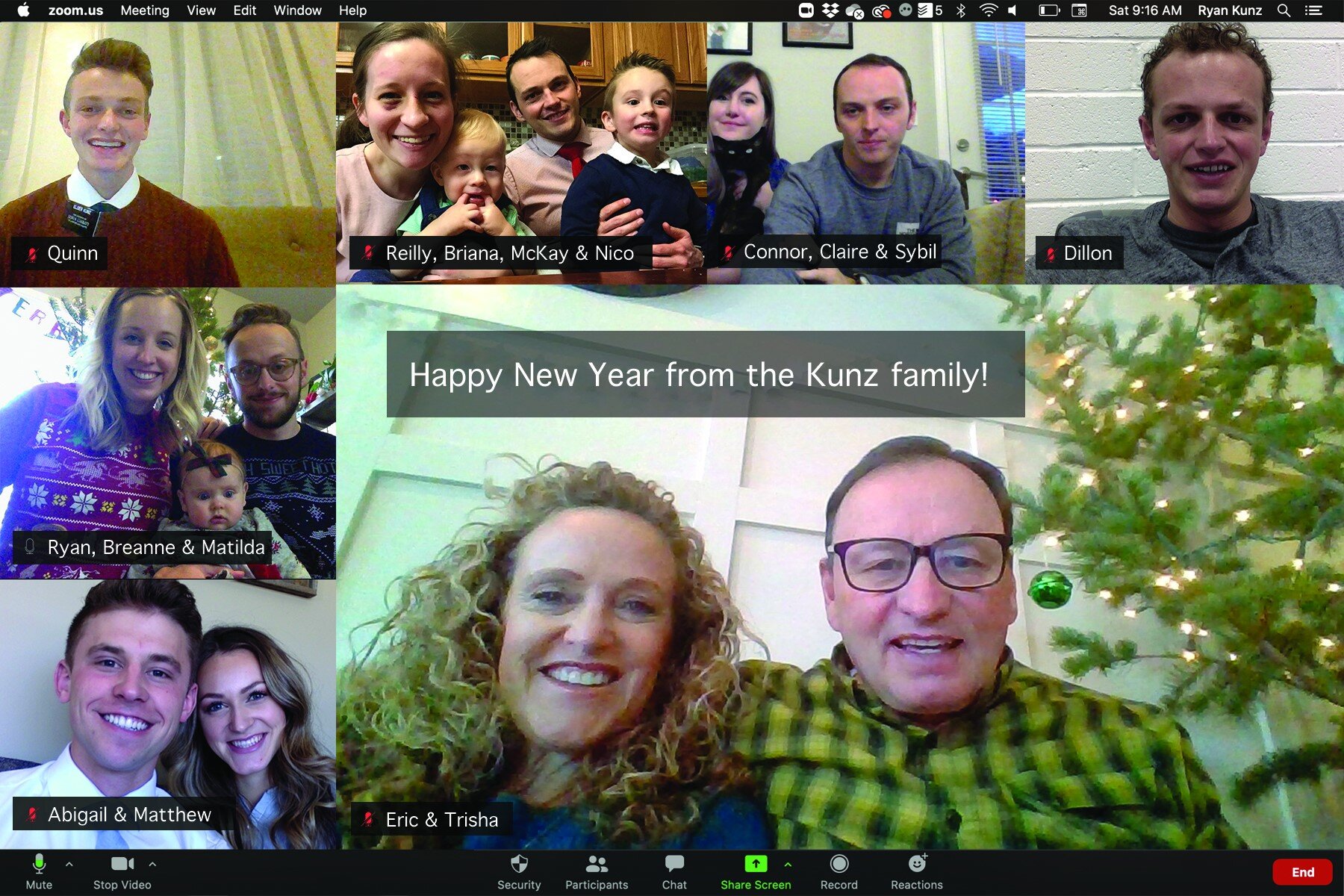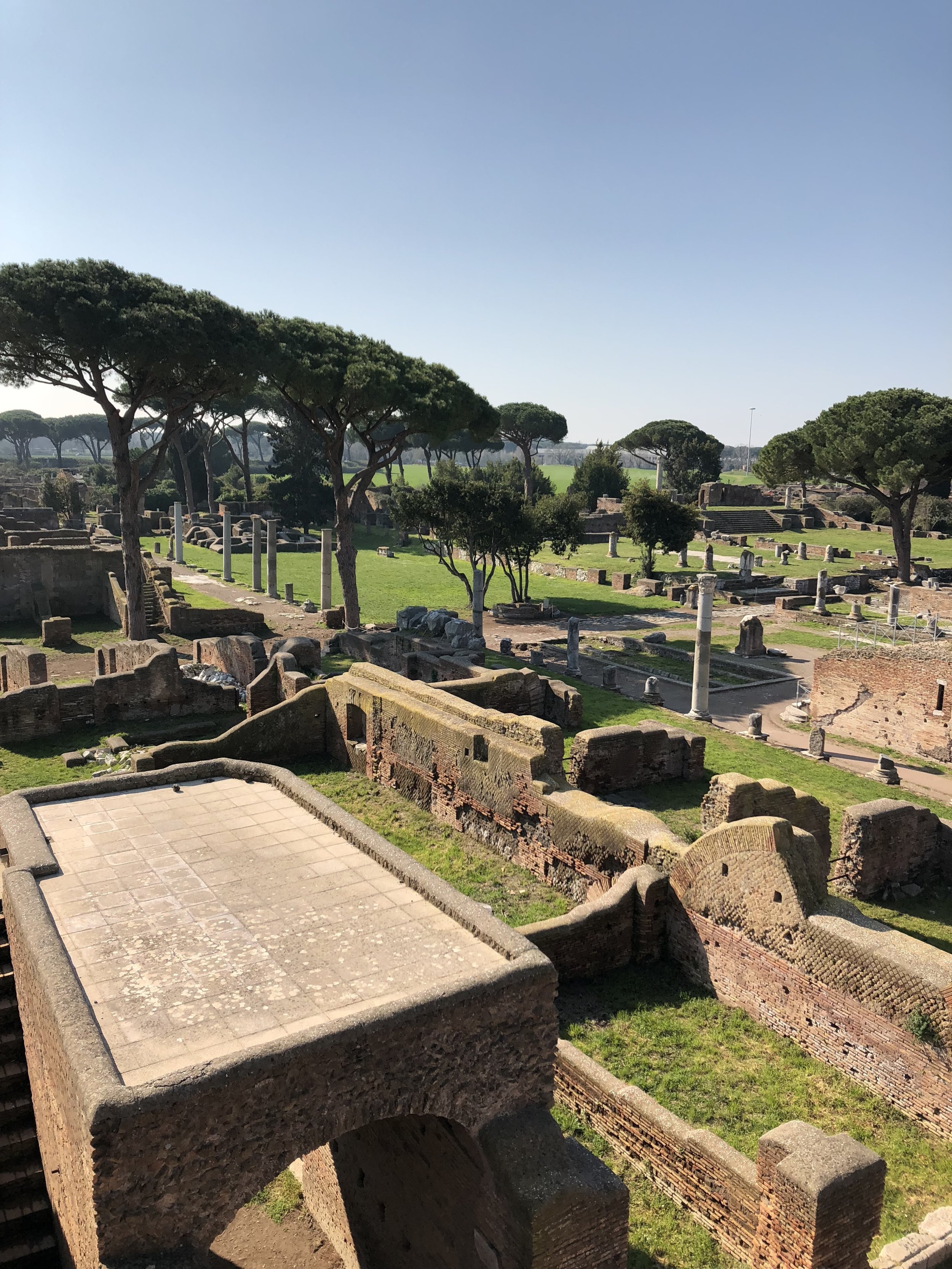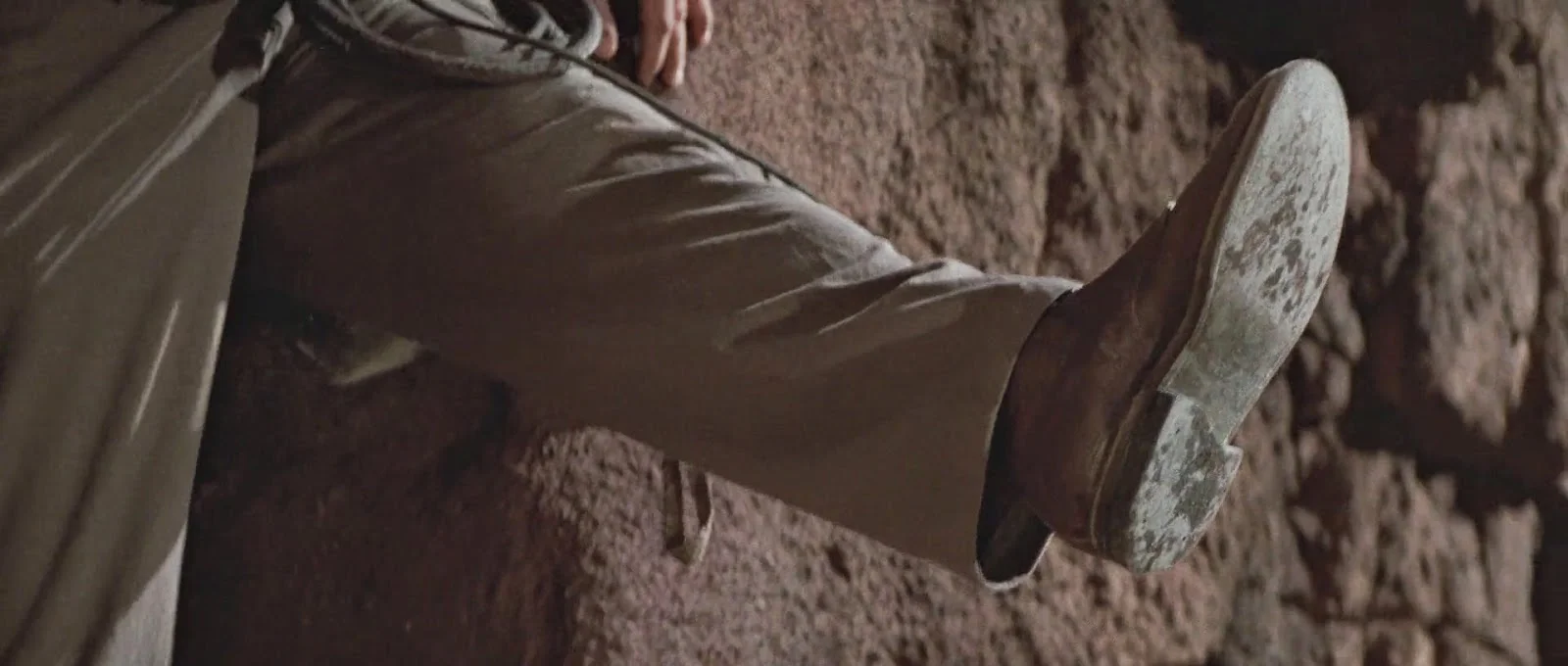Here's our family holiday card, sent out in January as is our custom, because who has time to send one in December? (Answer: literally everyone else.) It's a longer one, inspired by Dave Barry's annual Year in Review, but hopefully it's worth it... Welcome to the Kunz family holiday card! Grab your mask, hoard your toilet paper, and prepare to relive all seventeen months of 2020 with us...
JANUARY
2020 dawns, and the Kunz family is excited for the new year. Abigail returns home from her Latter-day Saint mission to Zimbabwe and begins processing applications to date her. The rest of the family is glad to see her after a year and a half’s absence. On a less positive note, nobody bothers to invest in Zoom, Charmin, or Purell, which turns out to be a grave mistake. But hindsight is 2020, a phrase we are officially retiring after this year.
FEBRUARY
2020 is shaping up to be a promising year. Ryan and Breanne announce the upcoming birth of their first child and prepare for a trip to Ireland. Connor and Claire get ready to go to Hawaii. Eric looks forward to sports. Quinn plans to complete his senior year. Dillon looks forward to a thriving social life at BYU. Reilly sees no reason that anyone would repeatedly shove a cotton swab into his brain, while Briana gets ready to do something other than keep their two young boys inside for months at a time. Meanwhile, 2020 laughs evilly, strokes its white Persian cat, and prepares to unleash a giant death laser at people’s plans.
MARCH
COVID happens! Everything is canceled, including concerts, movies, church, sports, social gatherings, friendship, fun, and emotional well-being. 2020 gets canceled so hard it may as well be Johnny Depp’s career. Quinn goes home from high school one day and never goes back. Travel plans are kissed goodbye. Speaking of kissing, Abigail meets a guy named Matt just before being trapped at home; he moves into the guest room above Eric’s shop to be near her, because a little worldwide pandemic isn’t going to get in the way of true love, or something. (Ew.) Connor and Claire also move in with Eric and Trisha for the lockdown; Trisha is secretly totally fine with this whole pandemic thing.
SECOND MARCH
April is subsumed into a second March, which is a bit like second breakfast, except with fewer hobbits and more soul-crushing anxiety. Ryan and Breanne settle in to work from home, joking that it sure would be weird if they had to do this for another month, but what are the odds of that? Abigail and Matthew, with nothing better to do than get to know each other, figure it’s about time to get engaged. Reilly, a physical therapist working in senior services, takes his first COVID test. (Don’t worry; it’s probably the only one, right?) Dillon moves home to stay safe.
THIRD MARCH
Connor and Claire (along with their cat Sybil) embark on a journey to North Carolina to take a new marketing job. Their car gives out halfway there with a broken transmission. (A day later, the CDC adds “broken transmission” to the growing list of COVID symptoms.) Ryan and Breanne buy a house, thereby achieving a major adult milestone and joining the exclusive community of people who get to complain about the cost of HVAC repairs. Reilly takes more COVID tests.
FOURTH MARCH
We’re not sure what happened during this month, which month this was, or even that it did, in fact, happen. Let’s move on.
JULY, MAYBE?
Abigail and Matt get married, thereby doubling the total non-running athletic ability in the Kunz family. All the family attends the wedding except for Reilly and Briana, who are trapped in Montana by strict quarantine requirements at Reilly’s job. With the tax season deadline extended until approximately June of 2150, Eric the CPA uses his free time to build a playhouse in the backyard for the growing roster of grandkids.
AUGUST
Ryan and Breanne welcome baby Matilda, who’s basically the literal incarnation of a tiny Disney princess, if Disney princesses were also poop firehoses. Dillon, after his careful efforts staying home all summer to avoid catching COVID, goes back to school and immediately catches COVID.
SEPTEMBER
Quinn gets his mission call to Reno, Nevada. Unlike missionaries called to foreign missions during this period, he looks forward to actually setting foot in his assigned mission. Reilly and Briana’s four-year-old son McKay starts preschool. Newly endowed with such learning, he becomes an expert on any given topic. (He quickly joins Facebook, where he fits right in.)
OCTOBER
Eric, Trisha, Matt, and Abby all catch COVID. Trisha uses her quarantine to finally get into Harry Potter. (Nobody tell her Snape kills Dumbledore, please.) Matt loses his sense of taste, which explains why he thinks the prequels are the best Star Wars movies. (I kid, Matt. Welcome to the family!) And Eric, seizing upon any sporting event still happening, watches BYU football soundly defeat anyone still willing to play them, including the Coastal Carolina Chanticleers and the Provo High School Bulldogs.
NOVEMBER
Quinn does a home missionary training center, which is just like the traditional experience but without the real MTC’s overwhelming sense of personal freedom and exciting variety of leisure activities. He eventually escapes and heads off to Reno. Somewhere around this time, Reilly takes his 30th COVID test (still negative, but at least the cavity leading to his brain is nice and wide now).
DECEMBER
Reilly and Briana’s other little boy, Nico, learns to walk when motivated by French fries across the room, thus demonstrating one of the great universal truths of the human condition. And with the holiday season comes a worldwide source of hope, joy, and brotherly love in these trying times: season 2 of The Mandalorian. Christmas also happens. All joking aside, it’s been a rough year for a lot of people, and we feel for all those who’ve struggled. We hope 2021 is a better year for everyone—and if it isn’t, we hope we each can all be a little better instead. And if not… there’s always 2022. Probably.









































































